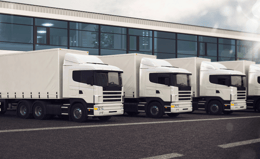RoadMap To Supply Chain Sustainability Success
Keith LaBotz - March 16, 2023

It’s time to get real about supply chain emissions. Sustainability doesn’t happen without realistic goals, plans, and solutions, and while that may be obvious, research indicates that most companies need help in these areas.
.jpg?width=462&height=193&name=Untitled%20design(1).jpg)
SOURCE: CO2 AI BY BCG CARBON EMISSIONS SURVEY 2022
Recent studies show companies must improve sustainability goals by a wide margin, as only a few can accurately account for supply chain emissions.
- A Boston Consulting Group (BCG) survey found only 10% of companies measure greenhouse gases comprehensively, and 86% use spreadsheets, resulting in emissions measurement errors averaging 25% to 30%. Not surprisingly, BCG concludes by urgently calling for an acceleration of efforts.
- Research by Bain & Company reveals that 31% of businesses failed to meet Scope 1 and 2 emissions reduction targets, with over a quarter veering 80% off the target.
According to Jenny Davis-Peccoud, co-leader of Bain & Company’s Sustainability & Responsibility practice, “CEOs have been bold in setting ambitious targets, while the roadmap to full delivery is still unclear and highly challenging.” She adds, “Successful leaders bring together what we call ‘dreamers’ and ‘doers’ in their executive teams to get to pragmatic solutions to visionary goals, steering toward net zero even through the macroeconomic and political turbulence in which we find ourselves.”
These companies lack realism in their sustainability efforts, and Davis-Peccoud’s observations are spot-on. She points to pragmatism, visionary goals, and an unclear roadmap - the problems realistic goals, plans, and solutions solve.
Let’s roll these ideas into five practical steps your company can follow to achieve sustainability success. We’ll call it the Realistic Roadmap.
Step 1: Think Realistic
The first step is the most important of all: approaching sustainability with a strong sense of realism. Realism is a mindset more interested in probability than possibilities. It's not risk-averse; it’s just more skeptical of claims and scrutinizes them for validity.
Most of us overestimate ourselves in this capacity, unaware of confirmation bias blinding our thinking. Realism takes a sustained conscientious effort. Without it, groupthink, assumptions, or persuasion can lull a business into taking risks visible to outsiders. That partially explains the high rate of sustainability failures noted previously in studies.
More importantly, realism quickly admits error and changes direction when evidence does not support a claim. You might call that intellectual agility, and it’s the creative force behind every agile supply chain, and that’s crucial for navigating an evolving area like sustainability.
Why is this important? Supply chain sustainability is attractive, but many assumptions and years of effort stand between current realities and the vision. There is no shortage of idealism, buzz, and ventures capitalizing on the idea, but we need more realistic thinking to see through the hype and bridge the gap.
2. Set Realistic Priorities
Supply chain sustainability depends on business continuity, making continuity the top priority for sustainability. Here are the priorities for the Realist Roadmap:
- The top priorities are protecting profit margins, competitiveness, agility, and mitigating risks because they ensure business continuity.
- Introduce sustainable practices wherever it makes sense, so long as they do not compromise the above priorities.
3. Create a Realistic Plan
A Realistic Roadmap identifies process improvements that support top priorities and enable sustainable practices. Nobody is more qualified to assess the impact of proposed changes than the “hands-on” stakeholders who manage the affected business function.
They usually give the most accurate feedback, including the timeline, savings, and emissions reduction associated with a proposed change. Their input becomes the basis for planning and goal setting.
4. Set Realistic Goals
The value of a Realistic Roadmap is its ability to achieve its goals, which requires realistic cost and CO2 reduction estimates. Using the plans from the previous step gives executives reliable numbers for making commitments and, more importantly, secures executive support for the stakeholders. Instead of blindly shooting for the moon, a CEO can make commitments the company can keep.
5. Implement Realistic Solutions
A realistic solution achieves a plan's goals and for sustainability, that means software that can measure and account for emissions. Look for automated solutions with the following qualities:
- Digital to maintain high accuracy and automation.
- A proven solution supported by measurable results.
- Functionality to address your company’s top priorities.
- Emissions accounting is embedded in functionality; it operationalizes emissions accounting and reporting.
- Supply chain management and optimization capabilities.
- Integrates into the existing workflow and business process.
- Cloud solutions for rapid implementation, integration, and cost-effective support
.jpg?width=574&height=195&name=Untitled%20design(2).jpg)
SOURCE: CO2 AI BY BCG CARBON EMISSIONS SURVEY 2022
Interestingly, BCG notes that organizations with automated solutions for emissions measurement are 2.2 times more likely to measure emissions comprehensively and 1.9 times more likely to reduce emissions in line with their goals.
Example: A Realistic Solution From flexis AG
flexis offers a cloud solution for optimizing transportation planning & scheduling for corporate fleets. The solution employs several automated features that address priorities such as inflationary pressures, high fuel prices, driver shortages, and demand volatility.
In addition to resolving supply chain challenges, algorithms in the software guide execution toward minimizing fuel consumption and GHG emissions. The process tightly integrates with BigMile, automating carbon accounting and reporting to regulatory agencies in a manner that’s transparent to end users.
The functionality automates several transportation planning and execution functions for an outcome that minimizes cost and emissions:
- Vehicle Routing and Scheduling (VRS): determine the most efficient routes and delivery sequences for multi-stop tours.
- Shipment Consolidation: reduces the number of shipments to minimize labor, fuel expenses, and emissions.
- Resource Leveling: scheduling inbound and outbound deliveries for optimal use of resources, eliminating waste, reducing operating costs, and preventing bottlenecks.
Conclusion
Following the five steps outlined in this article will ensure your company’s sustainability efforts are built on realistic goals, plans, and solutions, significantly boosting the odds of success. flexis AG provides the software and services that enable companies to implement the ideas presented.
If you want to learn more get your Guide to Logistics 4.0
In this Guide you will learn:
-
Why a strategic process in transportation planning is a top priority for digitalization
-
What megatrends will increase supply chain volatility
-
How to manage it
Want to learn more about Multimodal Transportation?
Download our presentation and learn:
-
How can transports be planned quickly and yet flexible so that CO2 savings are verifiable?
-
How do you make optimal use of a multimodal transport network that maintains supply in both the short and long term?
-
How can you more easily realize a modal shift when disruptions occur? And how do you keep a grip on your CO2 emissions in doing so?
flexis and BigMile present a Use Case of a modal shift and show that network optimizations and sustainability often go hand in hand.
LATEST POSTS
- Understand Circular Economy in The Manufacturing Industry
- How Can Industry 4.0 IT Integration Be Achieved Smoothly?
- The Significance of Order Sequencing in Discrete Manufacturing
- How to improve your Supply Chain Management: The Power of Control Towers
- Optimizing Human Resource Scheduling in Manufacturing: A Technological Approach




